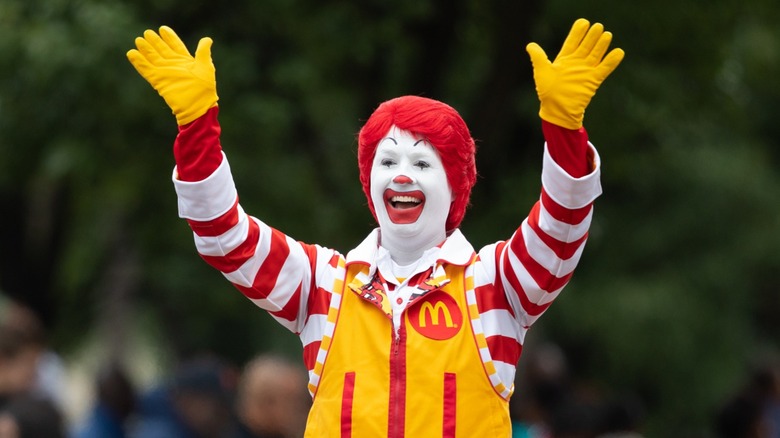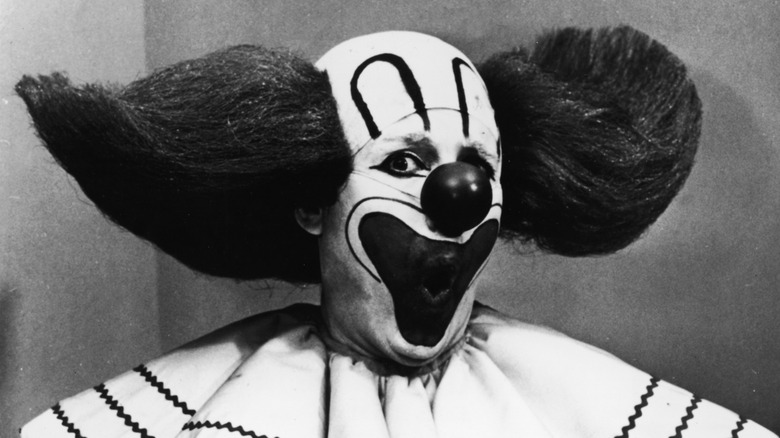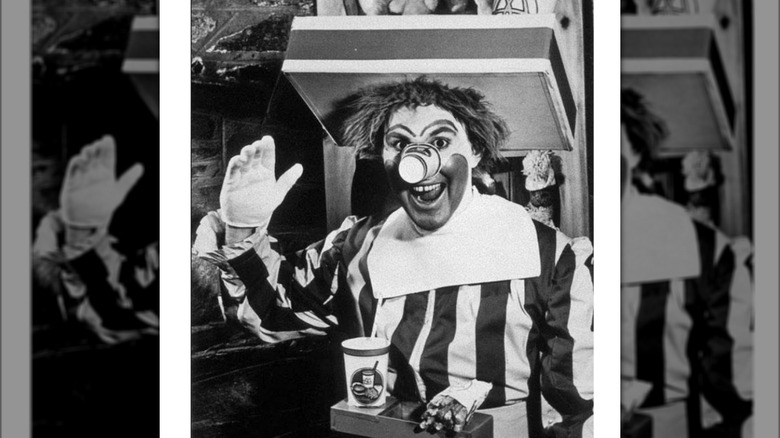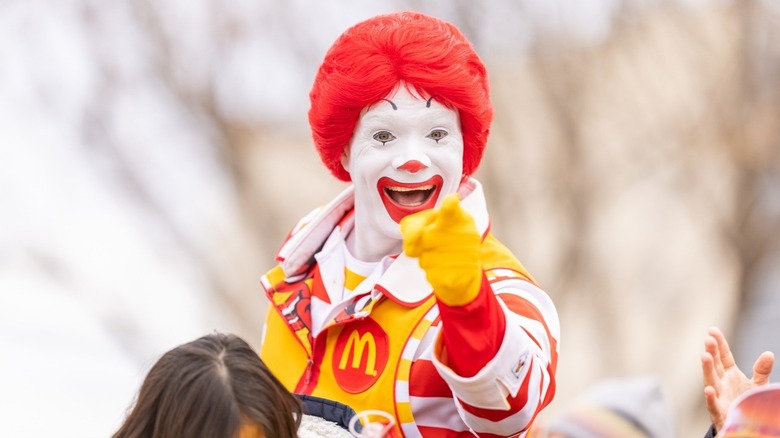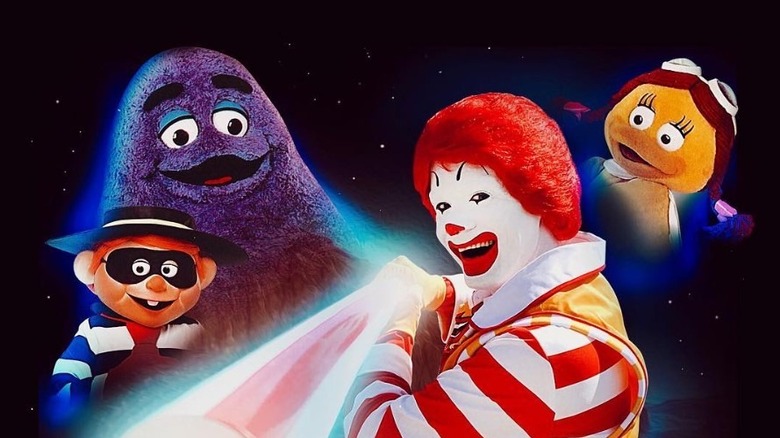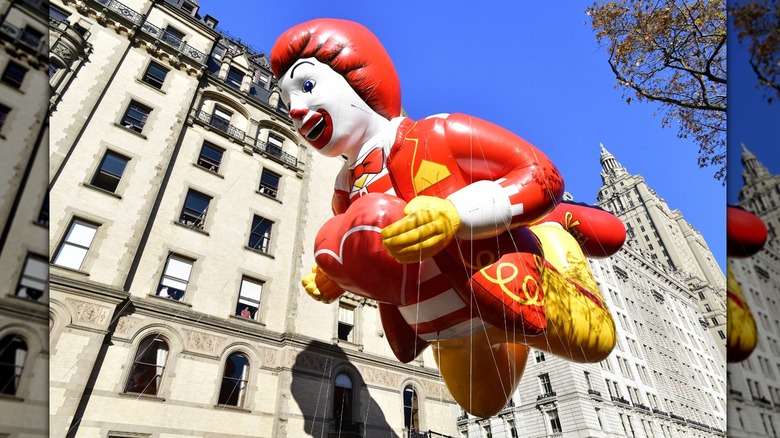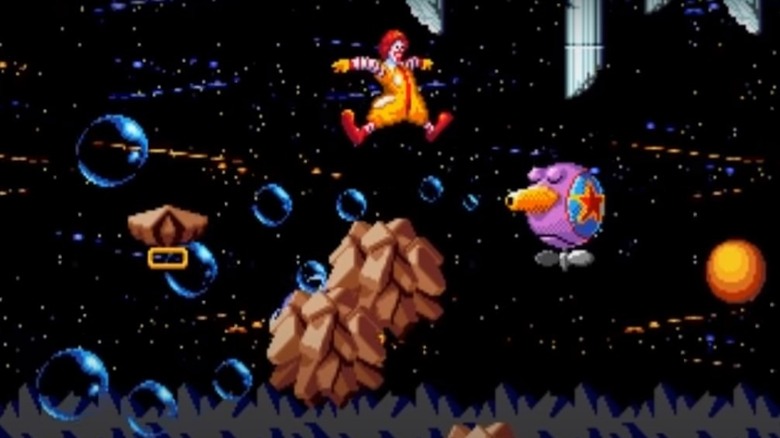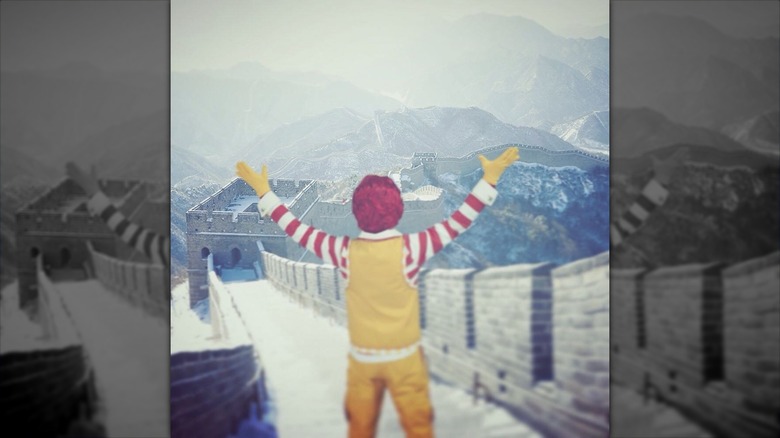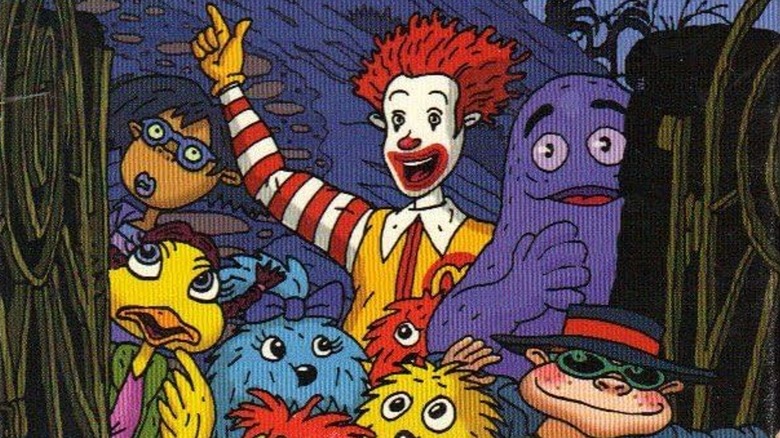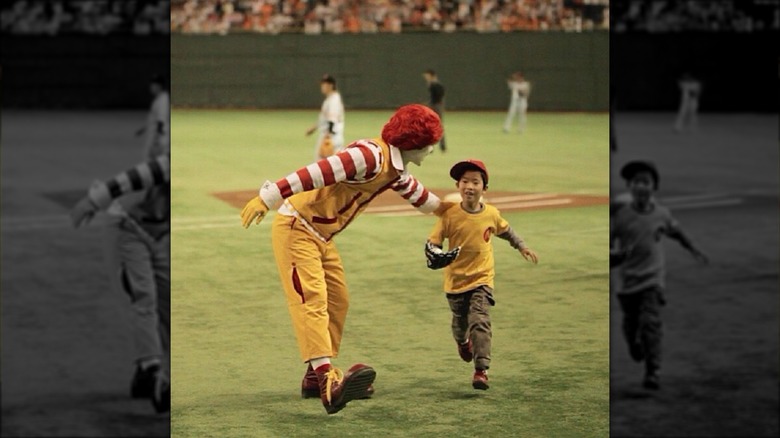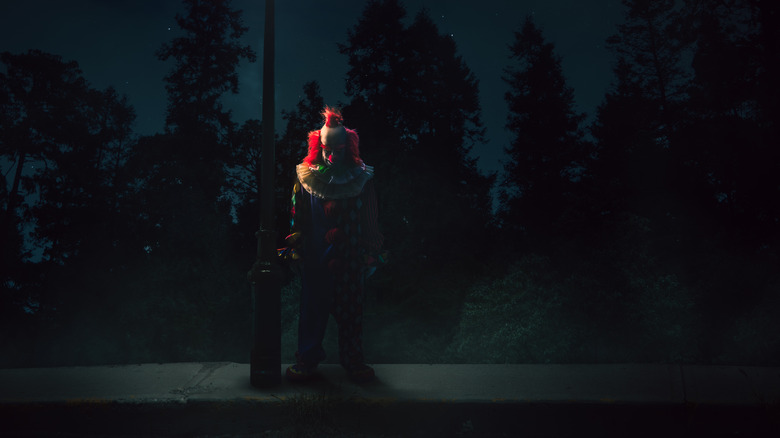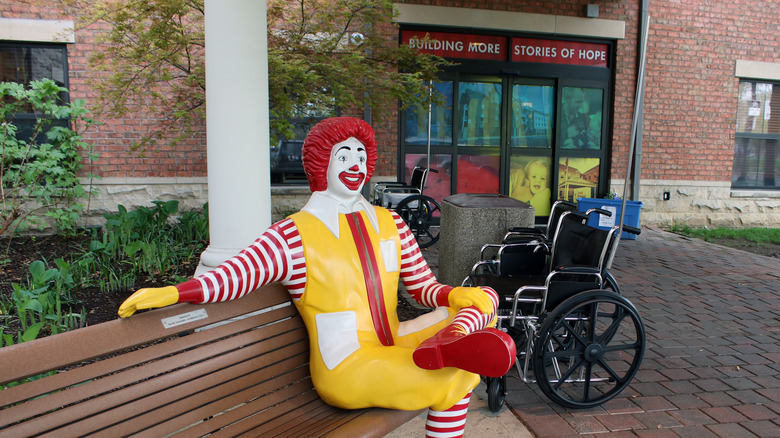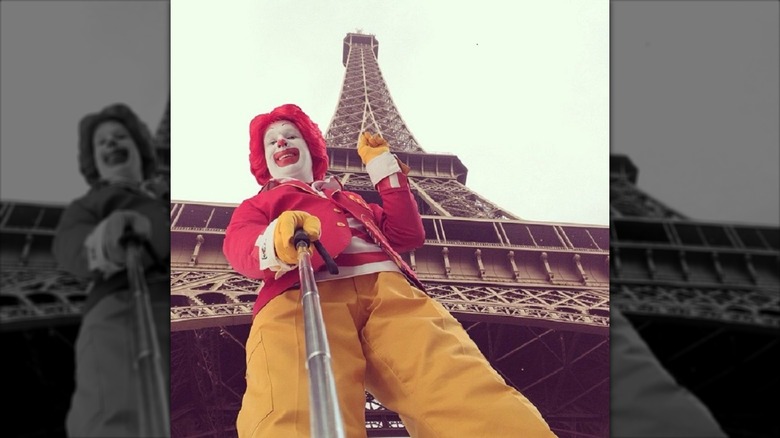The Evolution Of Ronald McDonald Through The Years
We may receive a commission on purchases made from links.
Love him or hate him, it's impossible to deny that Ronald McDonald is one of the most famous faces on the planet. Ever since he burst onto the scene in the '60s as the happy-go-lucky mascot for the McDonald's fast food chain, he's gone through quite a transformation. From being the smiling face behind the Happy Meal and chief resident of McDonaldland to a symbol of the childhood obesity crisis, he means a lot to a lot of people.
Lately, though, it seems like Ronald's been playing hide-and-seek. So, where did he disappear to? How did he start out? And how has he changed over time? Buckle up as we take a trip down memory lane to explore the evolution of this iconic clown! We'll dig into his roots, uncovering his rise to stardom and the twists and turns that have shaped his image. Along the way, we'll discover the impact he's had on our fast food-obsessed culture and the controversies that have dogged him.
Before there was Ronald, there was Bozo
Believe it or not, before Stephen King could get his hands on them, clowns were a much-beloved childhood icon. And in the '60s, Bozo was the biggest of them all. Bozo the Clown emerged in 1946 as a lovable character created by Alan W. Livingston and Pinto Colvig for a series of children's albums under Capital Records. With the success of his albums, Bozo soon made his way to television with the debut of "Bozo's Circus" in 1949. While Bozo's Circus originally aired in Chicago for WNG-TV, the show was a franchise property that was broadcast on local television stations, each with its own beloved Bozo entertaining children with comedy and magic tricks.
"Bozo's Circus" was one of the most successful children's programs at the time, and local businesses took full advantage — particularly, a local McDonald's franchise. In the Washington, D.C. area, a local radio host named Willard Scott was the man behind the clown paint, and he was asked to partner with DC McDonald's to create a series of commercials aimed at kids to promote the area's McDonald's restaurants. But eventually, when Bozo's show ended, McDonald's scrambled to find a replacement clown to continue promoting the restaurant, and that's where Ronald comes in.
Introducing Ronald McDonald, the Hamburger-Happy Clown
According to his book, "The Joy of Living," Willard Scott was asked to create a brand new kid-friendly character to help advertise MdDonald's burgers in 1963. Scott called his creation Ronald McDonald, the Hamburger-Happy Clown. He had the signature ketchup-and-mustard color scheme that later iterations would be known for, but he also wore a tray for a hat, a cup for a nose, and had an entire McDonald's meal balanced on his belt.
Scott only shot three commercials for McDonald's before the company took the character over and began using it nationwide. The first commercial was a general introduction to the character, with Ronald speaking to an offscreen narrator as he shows off his magic belt buckle that generates McDonald's hamburgers from thin air. The second commercial depicts Ronald introducing himself to a boy with a "McDonald's shake" of the hand, and gifting him hamburgers from the same magic belt buckle. The final commercial featuring Scott depicts Ronald hanging off the side of a hamburger-powered rocket as it shoots straight to the moon, capturing the American interest in space travel during the '60s.
Shortly after the third commercial spot was aired, the character was picked up by McDonald's to be used nationally and Scott would no longer don the clown suit. The character was changed to a version much more recognizable to the Ronald of today, and Scott would be credited as the "first actor to depict Ronald McDonald."
The actors who played him
Ronald has been played by a huge list of actors over the years. While the company does not like to acknowledge that Ronald isn't real or that he is portrayed by actors ("There's only one Ronald," an executive told Associated Press), each actor oversaw significant milestones in Ronald's character. In his early days, many of the actors who portrayed him were experienced performers or magicians who had previously portrayed TV clowns like Bozo.
After Willard Scott originated the character, the role was taken over by a number of actors, starting with Bev Bergeron, who introduced Ronald to a national audience. Ray Rayner, George Voorhis, Michael Polakovs, and Bob Brandon all took up the clown suit throughout the late '60s and '70s. Throughout the '80s and '90s, Ronald was played by Bob Brandon, Squire Fridell, Jack Doepke, and King Moody, who holds the record for the longest run as Ronald, at 16 years from 1969 to 1985. David Hussey comes in second, with 14 years under his belt from 2000 to 2014. Currently, Ronald is played by Brad Lennon, who took up the role in 2014.
McDonaldland
By the time the sun set on the 60s, advertisers everywhere were learning one thing: Kids were the best customers they could ask for. And no one knew this better than McDonald's. The company began ramping up Ronald's advertising campaigns throughout the '70s, most notably with a series of commercials set in the fictional fantasy world of McDonaldland. This is also where kids are introduced to the host of characters that would become icons in their own right, like Grimace and The Hamburglar, who continue to be well-known and nostalgic McDonald's characters to this day.
But McDonaldland was somewhat doomed to legal trouble before it even began. When McDonald's originally sought to create a fantasy world for Ronald, the company reached out to collaborate with Sid and Marty Krofft, who were behind the wildly popular children's character H.R. Pufnstuf — however, those plans were eventually canceled. But later, when the McDonaldland commercials aired, they featured characters that bore a striking resemblance to the cast of Pufnstuf, and a lawsuit was filed.
According to the lawsuit, McDonald's had not only taken heavy inspiration from the Pufnstuf characters, but it had also poached employees from the company (including M.R. Pufnstuf's voice actor) to create the characters, sets, costumes, and art for McDonaldland. McDonald's did eventually lose the case and had to pay over $1 million dollars in damages. It also had to begin phasing out offending McDonaldland characters, like Mayor McCheese, the Fry Kids, and Captain Crook.
The Macy's Thanksgiving Day Parade balloon
You know you've made it when you're a balloon in the iconic Macy's Thanksgiving Day Parade, and Ronald has made an appearance in nearly every parade since 1987. Ronald himself appears beneath the balloon in his giant red shoe-shaped car float every year.
Ronald's first balloon, which flew on and off from 1987 to 1994, features Ronald tumbling and partly upside down, holding three party balloons. The balloon was replaced in 2000 with a much simpler design, in which Ronald smiles and gives a thumbs-up gesture to the crowds. Ronald is still in his famous yellow jumpsuit. In 2008, a third balloon was introduced, this time fitting more with a winter theme. Ronald is wearing a green scarf and red ice skates. A fourth iteration of the balloon was introduced in 2015, dubbed "Circus Ronald" because of his bright red jacket (which the real-life Ronald also began wearing around this time).
Since 2021, Ronald's balloon has reflected a more subtle role in the company. Wearing a suit with a red jacket, yellow pants, and a re-and-white-striped shirt, Ronald holds a heart, indicating his mission to spread joy around the world.
Ronald the Video Game icon
By the '80s and '90s, Ronald was as recognizable a childhood character as Mickey Mouse. But he wasn't just famous because of his commercials. During this time, McDonald's began releasing video games that featured Ronald and his friends in various adventures through McDonaldland. Many of these games depicted Ronald as the main playable character, but not all. "M.C. Kids" was a popular title that depicted two kids, Mic and Mac, who help Ronald find his lost treasure.
One of the first titles to feature Ronald was called "Donald Land," a Japanese release for the NES in 1988. It would lead to a wave of McDonald's-themed games throughout the following decade. While some of these were relatively unknown, a few were moderately successful. Most famously perhaps were "Ronald McDonald's Adventure In TreasureLand," and "McDonald's Global Gladiators," both produced by Sega for the Sega Genesis in the early 90s.
Today, McDonald's continues to embrace (and cash in on) millennials' video game nostalgia, though Ronald has not appeared in one for decades. In 2023, the company released "Grimace's Birthday," a video game title designed and created for the 25-year-old GameBoy Color.
A global ambassador
By the 90s, McDonald's was seeing a massive boom in growth, not only in the United States but abroad as well. The early 90s were especially significant because two major marketplaces opened up abroad: countries that made up the former Soviet Union, and East Asian countries like China, Japan, and Korea. And as these locations sprang up, Ronald was there as the friendly face of the company and a symbol of outreach, perhaps most successfully in China. When McDonald's opened its first Beijing location in April 1992, the restaurant was the largest in the world and served over 40,000 people on its first day.
As Ronald's presence began to spread around the world, he was changed slightly to reflect the culture of the country he was in. For instance, in Thailand, the Ronald statues seen outside of McDonald's restaurants are posed standing up with their palms together, creating the 'wai', a traditional Thai greeting and sign of respect. And it's not just his pose that was changed — in Japan, Ronald's name was changed to Donald McDonald, or as Japanese McDonald's executives felt that the name would be more straightforward for the Japanese public to pronounce.
The Wacky Adventures of Ronald McDonald
The 90s were perhaps the peak of Ronald's popularity as a character. At the height of his career, he was not only featured in books and video games; he even had his very own series of direct-to-VHS films and '90s kids will likely remember these films that were produced and sold between 1998 and 2003. Each video cost $3.49 and could be purchased in conjunction with another food item, like a vanilla cone.
The films were part live-action and part animated, with the animated segments produced by Klasky-Csupo, at the time a major animation studio collaborator with Nickelodeon. There are six titles in all, which include "Scared Silly," "The Legend of Grimace Island," "The Visitors from Outer Space," "Birthday World," "Have Time, Will Travel," and "The Monster O' McDonaldland Loch." Each film followed the same format, beginning with a live-action segment and a real-life Ronald McDonald and his dog Sundae introducing the episode's theme. After a call from Grimace, Birdie, or another member of the gang, Ronald and Sundae would jump through a ball pit and slide down a playground slide where they were transported to the fantastical animated world of McDonaldland.
Activation Station and the Go Active campaign
It's no secret that McDonald's food is not the healthiest around, but the early 2000s marked a turning point for the brand. The hit 2004 documentary "Super-Size Me" details the account of Morgan Spurlock, who challenged himself to eat nothing but McDonald's for a month (and saw his cholesterol and blood pressure spike in the process). Shortly after its release, McDonald's received more criticism than ever for its unhealthy menu and began making changes. The chain got rid of its Supersize portions and began releasing items like salads, wraps, and yogurt parfaits in an effort to appear more health-conscious, and even began a "Go Active" campaign that featured a healthy Happy Meal for adults.
But despite these changes, criticism was still pointed squarely in Ronald's direction for advertising unhealthy food to kids, and he became a symbol for the rising childhood obesity rates. To combat this criticism, McDonald's began featuring Ronald in ads and a commercial campaign called "Activation Station," aimed at kids in an effort to get them moving. The commercials featured Ronald leading kids through simple exercises, like soccer warm-ups or a dance routine. He would then encourage the kids watching at home to get up and move with him. Unfortunately, these attempts did not fully win over the public and calls for Ronald to be retired continued into the 2010's.
The Killer Clown scare and Ronald's retirement
Finally, in 2016, a strange event would prove to be Ronald's undoing: the nationwide "killer clown" epidemic. It's hard to deny that the public perception of clowns has changed (and mostly for the worse) since Bozo's heyday in the '60s. Beginning with the John Wayne Gacy in the '70s, and with popular horror franchises like Stephen King's "IT" giving clowns a bad name, they're now looked on less as loveable entertainers and more as terrifying Halloween monsters.
What began as a viral marketing stunt that sparked a string of sometimes violent pranks, the strange clown craze certainly wasn't a good look for Ronald. Beginning in August of 2016, a string of clown sightings began occurring across the country, with this terrifying trend even making its way abroad to the UK. Videos were posted on social media showing people in scary clown costumes, usually standing around looking threatening, but sometimes even chasing the person behind the camera.
Clearly, Ronald had nothing to do with the killer clowns roaming the streets and terrifying people. But McDonald's executives were aware of the public's perception of clowns at that moment and understood that he may not be as well-received as he once was. The company used the opportunity to quietly pull Ronald from the spotlight. Since then, Ronald has made the occasional live appearance at events but has not been featured in a commercial campaign.
The Ronald McDonald House Charities
While Ronald may not be the main face of the fast food empire these days, he's still making an impact as the mascot for Ronald McDonald House Charities. Ronald McDonald House provides families of sick children with a place to stay while their loved one is in the hospital, as well as sponsoring family rooms in hospitals and providing medical and dental care to underserved communities globally. The charity was founded in 1974 and continues to be a worldwide presence, with hundreds of chapters in 60 countries and regions.
However, it's clear to see that even in this more diminished capacity we're seeing less of Ronald than ever before. While he used to make appearances for special ceremonies and events, and even visit sick kids in hospitals, that too is becoming more rare. However, in most Ronald McDonald House locations, you can still see the friendly clown reclining on a bench outside, similar to how he used to at McDonald's restaurants.
Where's Ronald Today?
Of course, we haven't seen the last of Ronald. He still occasionally makes the odd appearance at sports games and events. He also makes a few posts here and there on social media sites such as Instagram and TikTok, where he can retain a presence and promote nostalgia for the brand. And while his presence remains undeniably family-friendly, it has shifted to be more focused on the adults who know him, rather than today's young kids who have had less exposure to the character.
Ronald's social media posts include selfies taken at locations around the world, showing off his new outfits, interacting with fans, and promoting McDonald's food. As for in-person appearances, he is still a regular at large events like the Macy's Thanksgiving Day Parade and sports events such as McDonald's All-American Games. Recently, Ronald even made a visit to Capitol Hill with his pal Grimace for a Franchise Caucus kick-off meeting.
